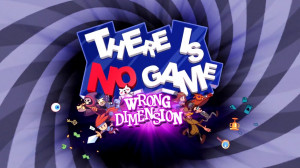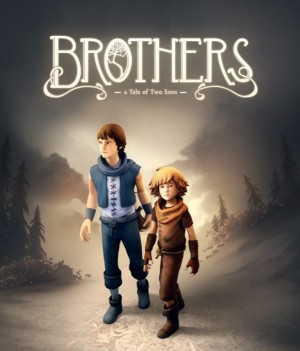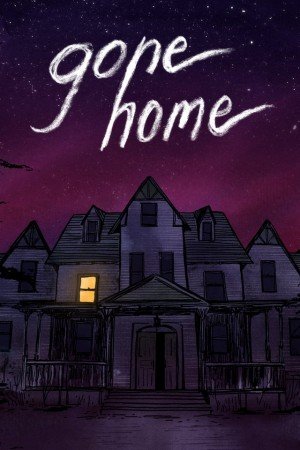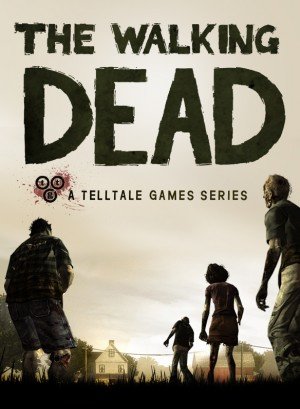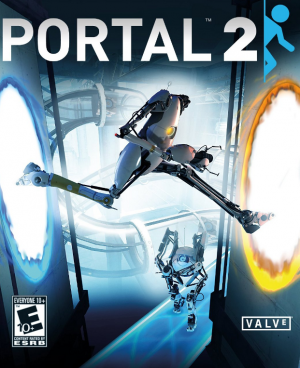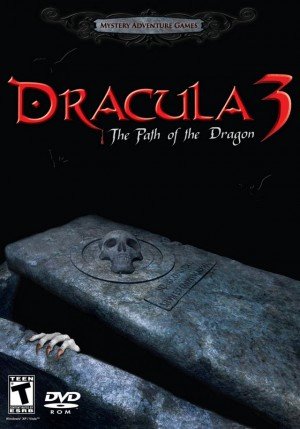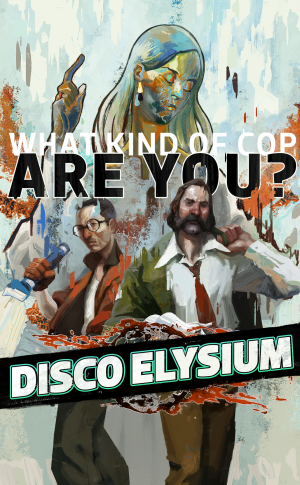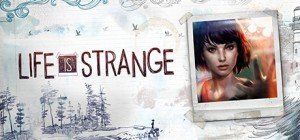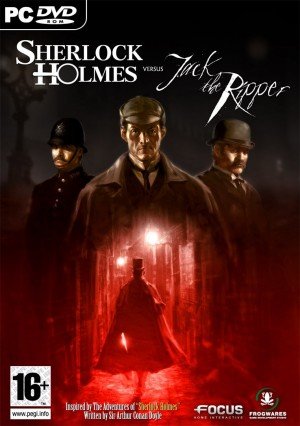Best Non-Traditional AdventureAggie Award Winners

For a genre that’s remained largely unchanged for decades, it’s actually got a rich history of experimental titles that push the creative envelope in unique, memorable ways. They don’t “evolve” or “redefine” adventures, but rather expand our understanding of what an adventure can be with their bold vision. Purists may resist, but this award honours those games that stretch beyond traditional genre conventions to offer something completely new, or at least present the familiar in imaginative new ways. Note: The winner of your Best Adventure Aggie should also win either Best Non-Traditional or Best Traditional adventure. These categories are not intended solely for runner-ups to the grand prize.
» Aggie Awards - category overview
The Aggie award winners:
There Is No Game: Wrong Dimension (2020 winner)
No point has been debated with more gusto in the decade-plus since the Aggies began than the dividing line between the traditional and non-traditional categories. No matter where you draw the line, however, we can all agree there’s nothing at all traditional about a game that has players forgo searching for items in favor of letting them tear the very interface apart to use the pieces as they see fit. It’s not just that There Is No Game: Wrong Dimension doesn’t want you thinking “adventure game” when you look at it; as the title says, it doesn’t want you thinking “game” at all. While there certainly is a game here – a brilliantly clever and often hilariously fun one – it emphatically does not want you to play it, and you’ll have to struggle tooth and nail using the game’s own logic, controls, and graphics against it if you want to bypass its many attempts to drive you away.
And yet, despite what it would have you believe, Wrong Dimension is an adventure game through and through. There’s no verb coin or dialogue menu to be found, but each challenge you come across is a puzzle in the truest sense, requiring all your wits and lateral thinking skills to solve, albeit occasionally within strict time limits. Where a normal point-and-click adventure would ask you to gather specific items from the environment and keep them tucked away for future use, this game forces you to consider the entire field of play and to think carefully not about what everything is, but what it could be. Icons, text boxes, menu options, script functions: if it’s visible on-screen, odds are you can use it to progress. This leads to some breathtakingly unconventional puzzle solutions that never feel unfair. No matter how impossible or bizarre each successive obstacle may seem at first, sticking with them and learning to speak the game’s language will lead you to a series of “aha!” moments like few other titles can manage.
Draw Me A Pixel’s There Is No Game: Wrong Dimension is a celebration of outside-the-box thinking – of gathering up all the rules, chucking them out the window, and just playing with the understanding that anything goes. “What would it be like if anything were really, truly possible in a game?” it asks, and then grants you several thoroughly entertaining hours to experience the joy of discovering the answer to that question for yourself. It’s anarchic, it’s frenetic, it’s one of a kind, and despite all its protestations about being a game in the first place, it’s ultimately the best non-traditional adventure of 2020.
2020 winner of:
2020 Readers Choice' winner of:
Outer Wilds (2019 winner)
Outer Wilds is only 22 minutes long, but it will likely take you 20 hours to complete it. Yes, if you know what you’re doing, you can complete the game in less time than it takes to heat up soup on the stove – in fact, the entire goal is to learn how to do so. Set in the small solar system of the folksy race of purple humanoids to which you belong, you’re tasked with setting off in your homemade spaceship to explore and map out your stellar neighbours. There’s just one pesky issue: 22 minutes after you wake, your sun goes supernova and destroys everything you’ve ever known. Luckily for you (and everyone else), you are resurrected back at the beginning of this severely limited time cycle with the memories of your previous journeys intact – again and again and again.
Thus your mission: to unearth as much of the mystery behind the star’s explosion as you can in your allotted time, exploring bizarre anomalies and accruing knowledge that will a) uncover whatever the heck is going on and b) clue you in as to how to fix it. Fortunately, this galaxy is filled with some of the most inventive and fascinating environments and mechanics ever seen in a game: a planet that crumbles, piece by piece, into a black hole at its core; another that siphons sand from its orbiting twin, radically altering the landscape over time; rocks that operate via quantum mechanics; and ancient alien ruins full of messages to translate. Outer Wilds is a tour de force of open world, non-linear design, packed with clever mechanics, awe-inspiring discoveries, and roasting marshmallows over campfires. You’ve never played anything like it, but now that the gaming world is paying attention, let’s hope this Aggie Award for Best Non-Traditional Adventure helps serve as inspiration to other developers going forward.
2019 Readers Choice' winner of:
Return of the Obra Dinn (2018 winner)
We’ve already established that Return of the Obra Dinn is one of the best detective games ever made, but it’s all the more impressive because it eschews nearly every element of a typical adventure game in doing so. Inventory puzzles? Nope. Environmental puzzles? Nada. Character interaction? With whom? They’re all dead! But who needs the standard genre trappings when you’ve got a ship full of horrific death and pixelized gore? With its single-minded focus on identifying the dead crew of the Obra Dinn (and the methods by which they met their ends), this is a uniquely compelling experience that takes place primarily between the player’s ears in piecing together the game’s one giant logic puzzle.
Not content merely to defy expectations about gameplay, however, indie deloper Lucas Pope has done a marvelous job bringing the ship to life (and death) in a stunning lo-fi, monochromatic style that recalls ‘80s MacVenture games like Déjà vu and Shadowgate, only thrust into the 3D era. Yet that deceptively simple visual approach belies a wealth of detail. Each frozen tableau of a character’s moment of death is deliciously complex, morbid, and often hilarious. This is a game that requires you to pay close attention to everything from the decorations on a sailor’s hammock, to the tattoos on their arms, to minor differences in accent and hairstyle. The package is topped off with a tragi-comically jaunty soundtrack, great voice acting, and atmospheric sound design. And the feeling of checking off another batch of names on your list of doom? Second to none. Return of the Obra Dinn is simply one of the most unorthodox but rewarding games of the year, and for that it’s the runaway Aggie winner for Best Non-Traditional Adventure.
2018 winner of:
2018 Readers Choice' winner of:
The Sexy Brutale (2017 winner)
While the meaning of “non-traditional” can be debatable, there’s no question that Tequila Works’ and Cavalier Game Studios’ The Sexy Brutale perfectly fits the bill. In fact, this odd isometric thriller is so different from the norm that it managed to fly largely under the radar of too many adventure gamers. Those who took the chance, however, were immediately drawn in and captivated by its unique premise, stylish execution, and haunting staying power. Assuming the role of Lafcadio Boone, players attend a masquerade ball at the titular casino mansion. It proves to be a killer party in a very literal sense, and Boone is forced to continually relive the same twelve hour timespan – playing out over the course of twelve real-time minutes – after receiving a mysterious time-controlling mask by the sanguine lady known as the Bloody Girl. The protagonist’s task is to rescue the other costumed guests, who, one by one, are all lured to their deaths via devious means, over and over again each time the clock resets.
While it may sound repetitive, The Sexy Brutale is fast-paced and can be completed in just a few sittings. The challenge is minimal, but this is to the game’s advantage, as there’s little standing in the way of constantly discovering a new room or laying bare a new devilish murder plot to foil. Each guest presents a unique narrative puzzle that must be unraveled, first figuring out where, when, and how they meet their end, then working out a way to stop it from happening… and here’s the catch: it all has to be accomplished unseen behind the scenes, without directly interacting with anyone. By the end, all threads weave together into a satisfying overarching tale, but the journey itself is the real joy here, accompanied by some truly lovely sprite-based visuals and an amazing jazzpunk soundtrack that’s equal parts relaxing and emotionally stirring. No, it’s not like any other adventure game you’ve ever played, but don’t let that deter you! In terms of captivating anthology-style storytelling artistry, combined with an engaging gameplay hook, The Sexy Brutale is easily one of the most refreshing, must-play adventures of 2017. And for that, it’s the Aggie Award winner for Best Non-Traditional Adventure.
2017 winner of:
2017 Readers Choice' winner of:
Samorost 3 (2016 winner)
Amanita’s Samorost games have always been more than a little bit eccentric, full of creative organic worlds that ooze with whimsical charm. Samorost 3 takes that already impressive foundation and incorporates it into a full-length adventure for the first time, setting its little gnome's travels within a larger story featuring killer space squid, giant robots animated by lumps of dark matter, and magic trumpets. Not that it’s become a plot-driven puzzler, mind you, The experience is still very much about the journey rather than the destination. You visit a host of lush, exotic places, all inviting you to just relax, explore, poke around and play to see what happens. Practically everything you touch reacts to you in some way, and there's plenty to fiddle with just for fun. It's easy to get carried away stacking cockroaches or teasing monkeys and forget what you're really supposed to be doing!
The puzzles are more challenging this time around, and the rewards are many and varied, from watching technicolour insects dance to orchestrating the work song of imps in a volcano. As always, it's a story told without words – just occasional speech bubbles full of pictograms and a comic book to fill in the background narrative gaps – but it's filled to the brim with unique music and sound. Creatures everywhere express themselves by chirruping and singing, and many of the game's best moments arise when they come together to perform in harmony. The places you visit are often in a bad way when you arrive, but the way the sad melodies shift and develop and eventually burst out in jubilation would melt the coldest heart.
Childlike joy and curiosity is at the core of the experience, even more than the beautifully animated graphics or the delightful soundscape. Seeing the pint-sized protagonist whoop with glee or just take a moment to sit back and enjoy the show is utterly endearing and contributes to an atmosphere quite unlike any other. It's somewhat reminiscent of The Little Prince, and like any good children's story it's packed with wide-eyed wonder and flamboyant imagination. Add in the inimitable settings, the adorable characters and the warmth that radiates from every screen, and it's clear why Samorost 3 deserves to win the Aggie for Best Non-traditional Adventure.
2016 winner of:
2016 Readers Choice' winner of:
SOMA (2015 winner)
Amnesia: The Dark Descent was one of the scariest games of all time, and when Frictional announced that their next game would be another first-person horror adventure, anticipation was high to see how they would top the frights of its predecessor. Well, as it turns out, SOMA isn’t as scary as Amnesia, but deliberately so, and far from being disappointing, SOMA raises the bar in so many ways that it is not only a better game, it’s one of the best games of the year in any genre.
Why? Perhaps it’s the incredible atmosphere, the indelible sense of place, the terrifying feeling of being miles underwater, all alone amidst crumbling wreckage that could collapse at any moment. Or maybe it’s the peerless storytelling, which effortlessly sidesteps any number of sci-fi clichés and raises fresh questions about the nature of humanity. Or is it the wonderful physicality of the environment, packed with an astonishing variety of detailed objects to pick up, examine, and fling around with satisfying physics. Possibly it’s the deeply disturbing, yet surprisingly subtle moral quandaries the game forces on you.
Of course, really it’s all of the above. SOMA is a harrowing science-fiction parable full of smart ideas, foreboding atmosphere, and moments of sheer suspense that holds its own against the very best narratives in science fiction, exploring new avenues of the human experience, raising difficult questions, refusing to give easy answers, and scaring the poop out of the player as it does so. It looks great, with varied but coherently designed environments that are wonderfully detailed and dramatically lit, and its sound design can now add “award-winning” to its list of superlatives.
A free-roaming 3D adventure, SOMA is not entirely traditional by genre standards, but it deftly balances moments of suspenseful stealth and frantic, terror-inducing escapes with a welcome amount of downtime for leisurely exploration and puzzle-solving. It sure ain’t point-and-click, but for those concerned about braving such perilous waters, we can’t think of a higher recommendation for delving the depths of SOMA (both literally and figuratively) than our Aggie Award for Best Non-Traditional Adventure of 2015.
2015 winner of:
2015 Readers Choice' winner of:
- No awards won
The Talos Principle (2014 winner)
The disembodied voice of God; QR codes with vague messages from strangers; anachronistic castles, temples, and ruins pockmarked with laser beams, force fields, and floating Tetris-like pieces… There’s clearly nothing traditional about The Talos Principle. Since the emergence of Valve’s Portal series, there have been a number of games emulating its classic puzzle-room structure and sense of underlying mystery concealed by an invisible overseer, but none that do it as well as The Talos Principle. This was a huge surprise coming from Croteam, better known for their work on the frantic retro shooter franchise Serious Sam. A quiet, contemplative puzzle game represents a complete 180 for the Croatian developer, but we’re happy to say they absolutely nailed the landing.
This is a puzzle game at its core, and what puzzles! There are myriad brain teasers that will test your spatial reasoning, timing, and ability to think laterally. They tiptoe right to the line of frustration and then relent, making you feel brilliant for reaching the solutions yourself. The most challenging ones are purely optional, representing the best of both worlds for players. Enveloping these puzzles is a gorgeous world full of secrets and a compelling backdrop that tells the story of a dying world with intelligence, humour, and heart. It sounds even better than it looks, and there’s a series of incredibly thought-provoking dialogues between two machines that manage to feel deeply human. The question of what qualifies as human is a mainstay of science fiction, but rarely is it handled so thoughtfully. For successfully merging so many fine elements into one cohesive whole, The Talos Principle is entirely worthy of our 2014 Best Non-Traditional Adventure award.
2014 winner of:
2014 Readers Choice' winner of:
For 2013 there were 2 winners in the category Best Non-Traditional Adventure.
Brothers: A Tale of Two Sons (2013 tied-winner)
Brothers: A Tale of Two Sons
Available at
Brothers: A Tale of Two Sons
Our top two finalists in this rapidly-burgeoning Aggie category couldn’t be any less traditional, nor could they be any less alike. One is an action-packed epic journey through a perilously beautiful fantasy world, while the other is an almost claustrophobic stay-at-home adventure in a single sprawling household in Portland. One is the wordless adventure of two brothers controlled simultaneously in union, while the other is a solitary first-person explorer filled with personal diaries and convincing voice recordings from a missing sister. One involves solving complex spatial puzzles and dexterity-challenging platforming elements, while the other requires nothing more than complicated than rummaging through drawers as you seek to untangle a mysterious, uncomfortably intimate family backstory. One has sweeping, timeless majestic orchestral scores, the other a variety of gritty punk tracks from renowned Riot Grrrl bands of the 1990s. But Brothers: A Tale of Two Sons and Gone Home have one thing very much in common: both are brilliant at what they do.
2013 Readers Choice' winner of:
Gone Home (2013 tied-winner)
The two games are similar in at least one other way as well. Although you wouldn’t necessarily suspect it from either premise, both of these entirely unconventional interactive experiences tell remarkably poignant tales of love and loss, of hope and despair, of family bonds that can never be shattered no matter the obstacle. You don’t need to be a medieval-era farm boy or a teenage American girl to share the deep connections the protagonists have with their troubled siblings. If you don’t feel even the slightest pangs of heartache and loneliness (or at least the disquieting sense of unease from imposed separation) in playing through either game, you’d best check for a pulse to see if you’ve still got a heart to break. So how did we choose the “better” of two such different yet evenly-impressive games? We didn’t! We know ties are a bit like kissing a sibling, but since both games are all about enduring family relationships, that image is entirely fitting. And so, for just the second time in Aggie history, we have co-winners of an award, this time for Best Non-Traditional Adventure of 2013. Both are deserving, and we just can’t break them up. (At least, not yet...)
2013 winner of:
2013 Readers Choice' winner of:
- No awards won
The Walking Dead (2012 winner)
For an interactive medium, stories in adventure games are typically experienced in a very passive way. You may enjoy the ride, but you're relegated the back seat. Telltale's The Walking Dead doesn't quite put you behind the wheel, but it does let you ride shotgun, both literally and figuratively. The story of Lee Everett and his ragtag team of zombie apocalypse survivors isn't simply told to us, but partially created by us, particularly during split-second decisions with crucial consequences. Many of the choices are far more cosmetic, providing merely an illusion of control, but the weighty moral issues and painful personal ones you'll wrestle with are what make the game so fully engaging and often deeply moving. What kind of character will you attribute to Lee? What example will you set for young Clementine? Will you forgive offenses to keep the group together, or foster grudges to drive out unwanted elements? There are no right and wrong answers – only your answers.
The game also makes liberal use of Quick Time Events for action-packed moments. It's an unusual gameplay mechanic in adventures that can quickly grow tiresome when overdone, but here they feel entirely appropriate. Where the story and dialogue choices build close relationships with your fellow survivors, the QTEs help develop the requisite sense of immediacy and danger that complements – by endangering – these attachments beautifully. You're only ever a careless misstep away from losing one of the characters you’ve become fond of, and each new zombie encounter or hostile human opposition reinforces this sense of constant tension. Sure, you'll do normal adventurey things in between, but its unconventional emphasis on intense character drama and action set pieces (along with its superb production values and memorable characters already acknowledged) are what make The Walking Dead a non-traditional adventure worthy of this year's Aggie Award.
2012 winner of:
Portal 2 (2011 winner)
Is it, or isn't it? The argument will rage on about whether Portal 2 is really an “adventure game” until we're all past caring (if we aren’t already), but by Adventure Gamers’ own longstanding definition it most certainly is. It just happens to be one that’s utterly unlike anything we’ve ever seen before (besides its own predecessor), or may ever see again. What most adventure gamers truly value most is a decent story with memorable characters, rewarding exploration and challenging puzzles, and Portal 2 delivers all of these in a thoroughly engrossing, imaginative way. And yet none of it feels like the sort of adventure we’ve all come to know and love: there’s no people (except you), no inventory, no pixel hunting, no dialogue trees, no point-and-click look/use/pick-up verb options that have been around since the dawn of time. Instead there’s a gun(!), bouncy shoes, goo balls, and light bridges. Just what the heck kind of adventure is this??
A brilliant one, that’s what kind. Without ever emerging from the cavernous confines of Aperture Science, the story takes some delicious twists and turns, and its memorable supporting cast of two – although entirely mechanical – show more human personality and actual character development than most other adventures combined through their insightful, often hilarious dialogue. The puzzles, meanwhile, never feel like they’re there just for the sake of it, always integrated in a totally natural way as you make your way through the ruined remains of a former industry giant. And the pacing is darn near perfect. Just when you feel you’re getting the hang of the current tools at your disposal, along come a new set of obstacles and clever means to overcome them. There’s even a whole co-op segment to go with the single player campaign for even more devious challenges to solve with a friend. So no, it isn’t Monkey Island and it isn’t Myst. Instead, Portal 2 is the Aggie Award-winning best of an exceptional lot of non-traditional adventures in a year of truly innovative offerings.
2011 winner of:
2011 Readers Choice' winner of:
Amnesia: The Dark Descent (2010 winner)
It just may be the scariest adventure game ever. In a genre that includes classics like Dark Fall, Amber: Journeys Beyond, and Shadow of the Comet, such a statement really means something. Amnesia: The Dark Descent is THAT special. It's also a game that could only have been made from a first-person perspective. Everything about it is geared toward full immersion, from the lack of any visible interface during normal gameplay to the "insanity" effects that warp and blur your vision. While notes you discover remind you that you are playing a man named Daniel, it won't be Daniel's safety you’re concerned about. When the panic sets in, you’re not controlling a character; that’s you. And you’re not playing a game; you’re there.
So are other unseen… things, frightfully lurking in the dark shadows. All around you, phantom noises rumble and echo throughout the crumbling gothic halls of Castle Brennenburg. Creatures with warped flesh dip in and out of the light. Even the walls can turn against you at a moment's notice, spawning a deadly growth somewhere between human flesh and fungus. The confinement of the first-person perspective means that when you're hiding behind a barrel praying silently that nothing evil comes your way, you won't know until it's too late. You can never be sure when you are in danger, and so you can never rest. All these elements come together to evoke the feeling that makes Amnesia a modern classic, and for that it earned an overwhelming victory in the battle for top first-person PC adventure of 2010.
2010 winner of:
2010 Readers Choice' winner of:
Dark Fall: Lost Souls (2009 winner)
As a slideshow-style 2D adventure game with limited animation, Jonathan Boakes’ Dark Fall: Lost Souls relies on its imagination to scare you... or rather, using your own imagination against you. Where other horror games bludgeon the player with monsters and combat or cheap scare tactics, here you’re all alone with creaking floor boards, tinkling wind chimes, squawking crows – these little touches are the only signs of life, which makes it all the more eerie when you starting hearing other… things. Maybe you aren’t so alone after all? Further exploration keeps you on edge with a constant reminder that something is very wrong in the old Dowerton train station and hotel, from the creepy mannequin pageantry to syringe-stabbed mattresses to actual otherworldly entities appearing in the dark, often just on the periphery of view.
That’s perhaps what makes the game so great as a first-person experience. Your role may be the anonymous “Inspector”, but the fear is your fear, the perspective is your perspective. This proves important, because for all its ghostly inhabitants, Lost Souls has a very human element as well. Indeed, it’s debatable which is the more haunted: Dowerton or The Inspector himself. Of course, there’s much more to a game than being scared, and this adventure backs up its horror quotient with solid gameplay and graphic quality that’s much improved (and put to good use) over the two previous Dark Fall games. At the end of the day, though, you’ll want to be frightened, and there’s a reason we called this game “one of the scariest point-and-click adventures ever”. For that accomplishment, it deserves the Aggie for this year’s top first-person title.
2009 winner of:
2009 Readers Choice' winner of:
- No awards won
Dracula 3: The Path of the Dragon (2008 winner)
At first glance, The Path of the Dragon seems to be just another solitary experience with a heavy reliance on puzzles. It doesn’t take long to realize, however, that this well-researched, riveting blend of historical fact, science, esoteric mystery and myth is one of the better, deeper games of its type. As Father Arno Moriani, a Catholic priest, players are sent to a small Transylvanian village to investigate the beatification of a doctor who devoted her life to helping her fellow countrymen, even during the World War I bombing that devastated the town. Haunted by his own nightmares, Arno soon finds himself entangled in a widespread conspiracy involving the Vatican, the mysterious Thule Society, and the epitome of the vampire mythos, Dracula himself.
Although numbered Dracula 3, this game bears no connection at all to Resurrection and The Last Sanctuary, its so-called predecessors. The depiction of Bram Stoker’s most famous creation here is both original and enticing, and everything in this adventure exudes atmosphere: the beautifully rendered locations are eerie and menacing, the musical score engrossing and suspenseful, the sound effects believably effective, and the cinematography swathes the player with its dense shadows, dim lights and cold colors suddenly ignited by sparkling flashes of vivid red. The plot unfolds slowly but steadily, with unexpected twists and moments of pure tension: occult lore, forgotten myths and secret conspiracy have been elegantly used by the designers to weave a brilliant story spanning almost five centuries.
Arno himself displays a convincing personality, struggling between faith and skepticism, loyalty to his priesthood and carnal urges, sacred love for God and human desires: his internal torment leads the game to a powerful ending that will leave you craving more. Such characterization of the playable protagonist is unusual in first-person adventures, and one of the key reasons for its broader appeal that sets it apart from its contemporaries.
2008 winner of:
2008 Readers Choice' winner of:
Readers Choice' Award winners:
There Is No Game: Wrong Dimension (2020 winner)
There Is No Game: Wrong Dimension flies straight past non-traditional to outright anti-traditional as it relentlessly skewers typical video game conventions and the standard reactions that result in rapid progress. None of that works in this defiant don’t-call-it-a-game, and the result is a deep dive into rethinking and retooling the adventure genre. In this daft dimension, swords both puncture and punctuate, zeros and ones are weaponized tears, the Home button can break your ankle, a game show answer might be your license plate number, and Miss New York is a polka dot bra strapped to a motherboard. It’s recklessly original, endlessly engaging, and fiendishly absurd. Be prepared for just about anything to happen and embrace the reality that you’ll be the one sorting through the clever solutions and lapping up the comic debris. It’s no wonder it copped both staff and reader awards as the best of its bunch.
Disco Elysium (2019 winner)
With the two traditional reader-award-hogging titans sitting this one out, it was left to Disco Elysium to capably fill the void. And for so many good reasons. This is a choice-laden open world game that encourages you to be a little weird with your amnesiac policeman's persona. Using your upgradeable skills to solve a sprawling murder mystery, no method of approach is off limits. Expect your fragmented subconscious to chime in with advice, sometimes arguing with itself over your next course of action. With genuine role-playing front and center, you can mold yourself into a boastful Superstar Cop, or perhaps a Sorry Cop who apologizes for everything (even if it's not your fault), or maybe even an Apocalypse Cop who prattles unhinged about the impending end of all things. This dense isometric world is positively bursting with memorable characters and exquisite writing so you’ll need to love reading, but for those who do, Disco Elysium is an eccentric, stimulating experience that stands as a new benchmark for player-directed storytelling in video games.
Return of the Obra Dinn (2018 winner)
Mr. Plum with the candlestick in the library! Wait, no, that’s Clue. But when you think about it, Return of the Obra Dinn is a lot like Hasbro’s enduring board game – only instead of cards and dice, you have to really use your brain to piece together victim, cause of death, and murderer (if any). Sixty victims, that is – sixty!! There are no conventional puzzles to solve per se, because the entire mystery is one huge interwoven logic conundrum to crack, and it’ll take diligence and careful observation (and fess up – a little bit of guesswork as well) to succeed. It may look like a 1-bit game straight out of the 1980s, but it’s surprisingly effective in action, and it’s backed by a terrific soundscape throughout. Take a look at a screenshot and you might be tempted to dismiss it; take some time to play for a while and you’ll be hooked. Staff and readers are in accord: Lucas Pope has crafted a winner.
The Sexy Brutale (2017 winner)
No argument here! The Sexy Brutale may have lost the battles for Best Concept to Gorogoa, but it won the both AG staff and reader wars for Best Non-Traditional Adventure. This unique and undeniably charming murder mystery won us all over with its Clue-like 1920s vibe, slick isometric presentation, jazzy soundtrack, stylish characters, time-looping paranormal plot and user-friendly stealth mechanics. Solving murders is fun, but preventing murders is even more so, and each new rescue unlocks additional abilities and areas to explore, ensuring players keep coming back for “just one more.” It’s a little alarming just how many readers didn’t nominate a single non-traditional adventure this year, so we encourage those who hesitate to take the plunge to give this Aggie winner a try. (And when you love it to death, there are four more recommendations after that!)
Samorost 3 (2016 winner)
Samorost 3 is a brilliant game, on that we’re agreed. But what makes it non-traditional? After all, it’s a point-and-click, third-person adventure filled with hotspots to click and puzzles to solve. What’s so unusual about that? Well, like most innovations, it’s all in the execution. Without the benefit of intelligible language, we are invited to truly engage with the many little organic worlds to understand them. Anything and everything might react to our actions, richly rewarding thorough experimentation in a way that few others can match. If it feels almost conventional by now, that’s only because like any trailblazer, Amanita Design has spawned numerous imitators over the years. But by earning both staff and reader awards for Best Non-Traditional Adventure of the year, clearly they’re still the masters of their particular craft.
Life Is Strange (2015 winner)
The best part of the adventure genre has always been its tremendous diversity. We all love us some point-and-click, but what a boring world if that’s all we got. Fortunately, every year we’re treated to a selection of new games looking to experiment, push boundaries, defy expectations. This year was no exception, whether an exploration of a fragmented video database, a legal lark starring anthropomorphic animals during the French Revolution, a brain-busting physics puzzler, or a sci-fi survival horror aboard a submerged outpost, to name just a few of the top contenders. But above all, you readers have chosen Dontnod’s cinematic teen drama Life Is Strange, for reasons which should be abundantly obvious by now.
The Talos Principle (2014 winner)
Remember way back when people squawked about calling Portal an adventure? Yeah, us either. Because here we are just a few short years later, and the Portal legacy has now laid the groundwork for a consistently engaging first-person puzzler model for other developers to build on. The result? A unanimous selection among staff and readers for The Talos Principle as the best game not featuring bottomless inventory, adventure game logic, and point-and-click mechanics. What it does offer is one of the most thought-provoking, substantial experiences of the year in both story and gameplay alike. And did we mention it’s from the folks that made Serious-freaking-Sam??!!
Brothers: A Tale of Two Sons (2013 winner)
Brothers: A Tale of Two Sons
Like us, you readers had a tough call between the top two finishers, but in your case the brothers beat the sisters outright, albeit by only a tiny margin. The winning combination of poignant story, stunning production values, epic fantasy setting, unique controls, and a variety of both mind- and reflex-challenging gameplay proved impossible to resist. Not everyone may like the genre’s increasing shift away from traditional adventure formulas, but for those in the mood for something a little different, you couldn’t ask for better in 2013 than Starbreeze Studios’ A Tale of Two Sons.
The Walking Dead (2012 winner)
The Walking Dead isn't really THAT non-traditional. You still wander around, collect items, talk to people and solve the occasional puzzle, but these elements are understated and even a bit underwhelming. Rather, its heavier-than-normal reliance on QTEs gives the game a more action-oriented bent than classic point-and-click adventures, and most importantly, its prominent focus on player-driven narrative choice and character drama is what really sets it apart, creating a truly memorable experience along the way.
Portal 2 (2011 winner)
In an extraordinary year of creative adventures, one game shot straight to the top of the list (probably by shooting a portal above the rest). It was a fierce battle among all the top competitors, but ultimately Valve’s genre-defying story-driven, first-person, physics-based platforming puzzle shooter – or as we like to call it, an adventure game that focuses on puzzle solving within a narrative framework – took the cake for staff and readers alike.
Amnesia: The Dark Descent (2010 winner)
Amnesia: The Dark Descent still would have been scary with a visible protagonist, but only its more limited, claustrophobic viewpoint could generate the kind of terror we clearly all felt as we scrambled frantically between scarce light sources. While some would argue this game isn’t even an adventure, really the only victim of this “survival horror” was our sanity, and we loved every masochistic pulse-pounding moment.
Sherlock Holmes vs. Jack the Ripper (2009 winner)
Ironically, this year’s readers’ choice could have won both first- and third-person awards, as Sherlock Holmes vs. Jack the Ripper was the first game from Frogwares to release with both perspectives and two control methods available. But winning even one is a significant accomplishment, and the great detective’s showdown with the notorious serial killer was all the more compelling (if a little grisly) when viewed up close and personal.
Dracula 3: The Path of the Dragon (2008 winner)
Obviously you see what we see in The Path of the Dragon, but then we all have an up-close view from its first-person perspective. With the Dracula franchise in the hands of Kheops for the first time, the "series" took a substantial leap forward, and its refreshing approach to the vampire theme was able to fend off challenges from Penumbra: Black Plague and Nikopol: Secrets of the Immortals.




